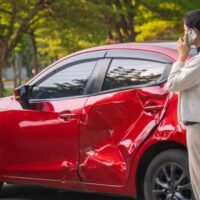Overcoming Jury Bias Against Low-Speed Collision Claims: Effective Trial Strategies in Florida Auto Cases

Low-speed car collisions, commonly referred to as “fender-benders,” often present significant challenges when they result in injury claims. Jurors frequently hold biases, believing that minimal property damage equates to minimal or nonexistent injuries. This misconception can unfairly prejudice victims seeking rightful compensation.
Effectively addressing and overcoming these biases requires strategic legal approaches and skilled advocacy. Engaging experienced West Palm Beach car accident attorneys is essential for successfully litigating low-speed collision cases in Florida.
Understanding Jury Bias in Low-Speed Collisions
Jurors often enter courtrooms with preconceived notions regarding low-speed accidents, assuming these incidents cause negligible injuries or that plaintiffs exaggerate claims. Such biases stem from common misconceptions:
- The assumption that visible vehicle damage directly correlates with the severity of personal injury.
- The belief that occupants cannot sustain serious harm at lower collision speeds.
- Skepticism of plaintiffs claiming injuries from seemingly minor impacts.
Overcoming these prejudices requires carefully structured evidence, persuasive expert testimony, and clear educational approaches from attorneys.
Addressing Misconceptions Through Expert Testimony
One of the most effective strategies for counteracting jury biases involves utilizing authoritative expert witnesses. Medical professionals, biomechanics specialists, and accident reconstructionists play pivotal roles in providing credible, scientific explanations of how even minor impacts can cause significant injuries.
Medical experts can clearly articulate the physiological impact of low-speed collisions, explaining how injuries like whiplash, soft tissue damage, and spinal injuries frequently occur at low speeds. Biomechanics experts offer testimony demonstrating how minor collisions create forceful movements capable of causing substantial injury, despite minimal vehicle damage.
Utilizing credible experts effectively educates jurors, challenging their misconceptions, and significantly improves the likelihood of a fair verdict.
Highlighting the Science Behind Injuries
Jurors tend to trust objective scientific data. By presenting medical imaging results (such as MRI scans or X-rays), attorneys provide tangible evidence supporting injury claims, making injuries undeniably visible. Additionally, expert explanations that directly connect these medical findings to low-speed collision mechanics reinforce their legitimacy.
Scientific evidence also illustrates the delayed onset and progressive nature of certain injuries, countering jurors’ skepticism of delayed injury reporting. Presenting detailed medical records and expert analyses emphasizes the validity of plaintiffs’ injuries, thus directly challenging biased assumptions.
Demonstrating Real-Life Impact
Jurors often empathize more with plaintiffs when presented with clear, relatable impacts on daily life. Personal testimony from the plaintiff, family members, or coworkers can vividly depict the real-world consequences of seemingly minor injuries.
Explaining how injuries affect basic activities, such as work responsibilities, family interactions, or recreational pursuits, creates powerful emotional connections. Personal narratives underscore the legitimacy and severity of injuries, allowing jurors to appreciate the plaintiff’s situation more fully, reducing skepticism and enhancing empathy.
Addressing Defense Strategies Head-On
Insurance companies and defense attorneys typically exploit jury biases, emphasizing minimal vehicle damage or perceived plaintiff exaggeration. Effective plaintiff attorneys anticipate these defense tactics and proactively counter them.
Addressing potential defense arguments early in trial proceedings minimizes their impact. Attorneys should openly discuss anticipated defense claims during opening statements, providing jurors with context and preparing them to assess defense arguments critically rather than accepting them uncritically.
Visual Evidence and Demonstrations
Visual aids and demonstrative evidence significantly enhance juror comprehension. Photos and videos illustrating collision mechanics, accident reconstructions, and vehicle interior damage effectively support the plaintiff’s arguments.
Visual demonstrations, such as simulations illustrating the sudden, violent motion occupants experience during minor collisions, clarify complex concepts. Such evidence vividly illustrates how injuries can result from even low-speed impacts, effectively dismantling biases based on superficial assessments of vehicle damage.
Jury Selection and Education
Effective jury selection significantly influences outcomes in low-speed collision trials. Attorneys should carefully screen potential jurors for biases related to minor-impact cases, addressing and challenging juror misconceptions directly during voir dire (the process of selecting a jury).
Educating jurors about misconceptions at the outset sets an accurate foundation for viewing the case. Openly addressing common biases helps select jurors who are capable of objectively evaluating evidence, thereby significantly improving the likelihood of a fair outcome.
Importance of Skilled Legal Advocacy
Overcoming biases against low-speed collision claims demands skilled advocacy, strategic evidence presentation, and comprehensive preparation. Experienced attorneys adeptly combine expert testimony, scientific evidence, personal narratives, and visual aids to educate jurors, correct misconceptions, and persuasively advocate for fair compensation.
Contact Smith, Ball, Báez & Prather
If you have been injured in a low-speed collision in Florida, skilled legal representation is essential to overcome common jury biases and secure rightful compensation. At Smith, Ball, Báez & Prather, our experienced West Palm Beach car accident attorneys employ proven strategies and aggressive advocacy to effectively litigate low-speed collision claims.
Contact us today to discuss your case and protect your legal rights.
Source:
- Florida Statutes on Auto Accident Liability
- Relevant Florida Court Decisions on Low-Speed Collision Claims
- American Medical Association (AMA) guidelines on Injury Mechanisms
